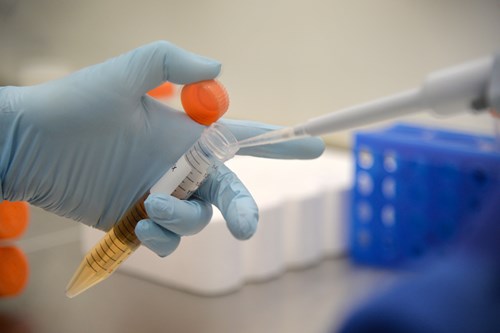Cell lines aiding virology research

The development and mass production of vaccines to prevent these pandemics started by the isolation of viruses using laboratory animals and embryonic eggs3. However, the propagation of human cells in vitro presented an opportunity for virus isolation which would significantly decrease the use of laboratory animals in experiments. This was first achieved in 1913 on the Vaccinia virus which was grown with the aim of vaccine production3,4.
The production of commercially prepared cell lines; such as those supplied by the European Collection of Authenticated Cell Culture (ECACC), increased the quantity of virus diagnostics immensely as they are less expensive than laboratory animals and are more convenient to examine for viral proliferation. Viruses within cell cultures can also be incubated and grown in desirable conditions, aiding the detection and identification of many viral pathogens; leading to cell culture becoming “gold standard” for virus detection and identification3.
The majority of the material within the National Collection of Pathogenic Viruses (NCPV) is in the form of cell-cultured virus stocks; using cell lines from ECACC. NCPV uses permissive ECACC cell lines with various tissues of origin for different viruses to deliver optimised growth. For example, Human Foetal Lung cell lines such as WI 38 can be used to culture Rhinovirus 2, while Adenovirus 1 is isolated from Human Embryo Kidney cell lines, for example 293.
The cell line which has been used by NCPV to prepare each virus batch is detailed on its Certificate of Analysis and linked on the Culture Collections website under “Related Products”.
References
-
Erdem, H. and Ünal, S. (2015). New global viral threats. Saudi Medical Journal, 36(4), 393-398. DOI: 10.15537/smj.2015.4.10089
-
Lederberg, J. and Relman, D. (2009). Microbial evolution and co-adaptation. Washington, D.C.: National Academies Press, Chapter 5.
-
Leland, D. and Ginocchio, C. (2007). Role of Cell Culture for Virus Detection in the Age of Technology. Clinical Microbiology Reviews, 20(1), 49-78. DOI: 10.1128/CMR.00002-06
-
Hematian, A., Sadeghifard, N., Mohebi, R., Taherikalani, M., Nasrolahi, A., Amraei, A. and Ghafourian, S. (2016). Traditional and Modern Cell Culture in Virus Diagnosis. Osong Public Health Res Perspect, 7(2), 77-82. DOI: 10.1016/j.phrp.2015.11.011
Prepared by Callum Robertson
